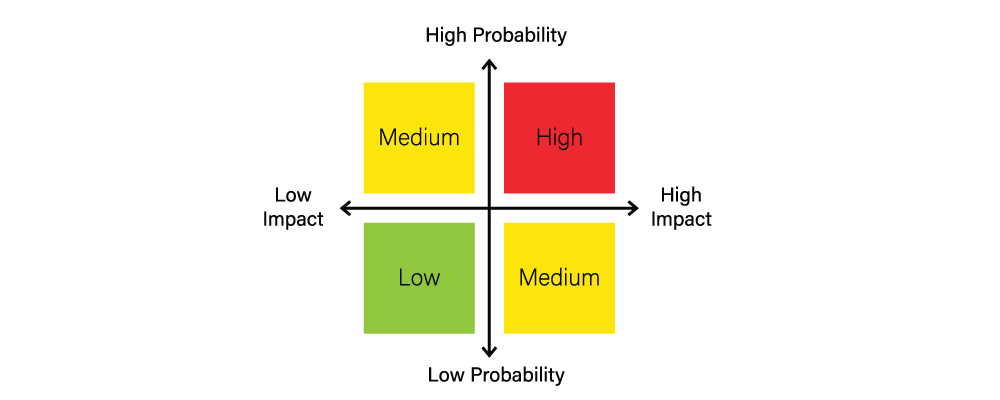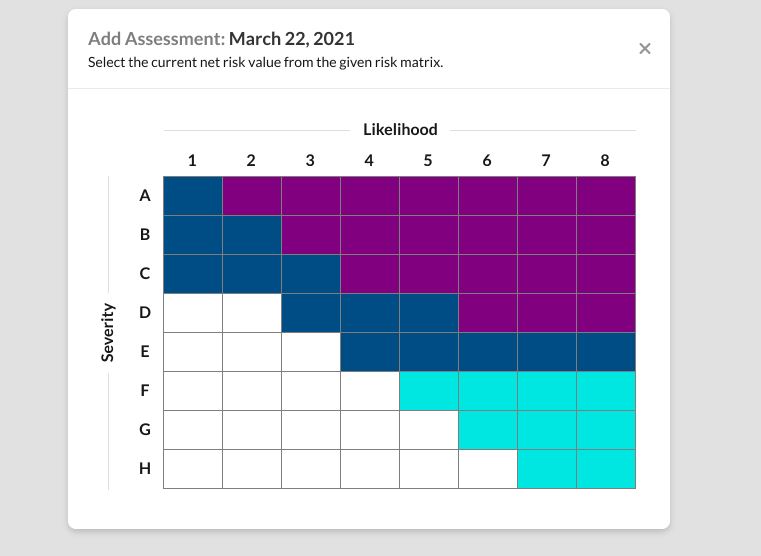A successful business is all about making the right decisions at the right time. Good decisions can completely make or break your business, they can either steer your team in the right decision and hit your goals or simply bump your business car with unrecoverable losses.
So, how do you make these decisions? Flip a coin? Roll a dice? Or simply trust your gut and go with it? Decision-making is one of the most crucial parts of good business planning, however, it can be quite tricky to understand which option is the best one and which you should go with. The key is to be super quick without being doubtful while making the right decision as well.
Does it sound like an impossible task? Don’t worry, even if it is a bit of a hassle, we are going to break it down into smaller chunks to make it super easy for you to understand and implement. With the help of a decision matrix, you can conveniently address the pros and cons of each decision, weigh across different variables and make a great decision quickly and easily.
Before we learn all about the decision matrix, it’s important to know what it is!
What is a decision matrix?
A decision matrix is a type of value showcased in rows and columns that allow you to visually compare possible solutions by simply weighing variables based on their importance. It is a tool to carefully evaluate and select the best possible option between different choices.
This tool is generally used if you are confused between more than one option and there are multiple options you must consider in order to make your final decision. There are multiple other names for decision matrix such as Pugh matrix, Grid analysis, multi-attribute utility theory, and problem selection matric and decision grid as well.
A decision matrix does not only help to select the best course of action for business but also assists in prioritizing tasks, problem-solving, and creating arguments to simply defend a decision that you have already made. It is most beneficial when you are looking for a solution from a logical and practical viewpoint and you have more than one variable to weigh and compare. To create such a matrix, you must determine which criteria are important in making the final choice and then assign them weightage for evaluation.
Let’s check this out with further details and determine when should you and should not use a decision matrix.
Featured Reading:
How to Use the Risk Assessment Matrix in Project Management?
When to use a decision matrix and when not to?

As discussed above, a decision matrix not only helps in making complex decisions but also assists in prioritizing tasks and crafting a solution to defend the solution you have already come up with. However, you don’t always need to use a decision matrix.
If your evaluation criteria do not limit you in choosing between two variables, then the decision matrix might not be the best choice to make. For instance, it won’t let you decide what direction your team should take for the upcoming year as the things you are deciding between are not comparable altogether. Here are a few of the instances where you must have a decision matrix, such as:
- Comparing multiple options or choosing between a variable
- Narrowing down multiple options to opt for a final decision
- Weighing down multiple important factors
- Opting to reach a decision or a solution from a logical perspective, instead of a gut feeling or an emotional/intuitive decision.
If you feel like decision-making matric does not fit with your business situation, learn about other forms of decision-making approaches below.
How to create a decision matrix?
A decision matrix helps to easily evaluate the best option between different choices, based upon multiple factors and their relative importance as well. Here are the steps required for creating a decision matrix properly.
1. Identify the problem clearly
The foremost step is to simply insert the decision that is supposed to be made or the question that needs to be solved in the decision box. This statement must be clearly defined and understandable by everyone.
Let’s take a practical example here, you have to make a choice between revamping your old office or simply moving into a newly furnished building. Put up the correct question and put it in the decision box to view.
2. Identify all the decision factors

In this step, you need to do brainstorming the selection criteria for the decisions that need to be taken for this matrix. In short, all the questions must be answered, what are the factors needed to help make the right decision? Or, what are the critical success factors that must be met to reach a decision?
In the example given in the above-mentioned step, the factors that will have a huge effect on these decisions are,
- How quickly can we get a return on the given investment? The sooner it is, the better it is.
- What are the cash flows, and how will each of these options impact the company’s cash flow at the bank?
- Always be conscious of the timing – how much time is lost in each scenario?
This set of criteria in the process will help you identify the best decision and avoid any subjectivity.
3. Add alternative options
Now it is finally time to add the different options available to compare them, these are, in other words, the solution to your existing problem. In our example, we have two options:
- Shift into a newly furnished office
- Revamp the old existing office
4. Create a decision matrix
A decision matrix is a grid where you can easily compare all the essential considerations between the various given options. Naturally, you can even build these decision matrices over nTask, it is a task management and work management tool to help you organize and execute the work across multiple organizations and enhance efficiency and productivity within teams.
5. Assign a weight to each of your decision factors

It is basic in any decision, some factors will always have more priority over the other variables, for this reason, you need to assign weights to each of the given factors. Each of the decision factors needs to be given a score from 1 to 5, with 1 being the least important at minimum importance, and 5 at most priority as maximum.
It is highly essential to not give each decision factor the same weight, otherwise, the analysis won’t be carried out perfectly and there will be a lot of loopholes, making it difficult to reach a decision. If you are having difficulty in finding a score, the best solution is to extend the scale from 1 to 10, to assess each variable even more thoroughly.
6. Add scores for each of the options
The same process that was done previously will now be done in regard to each of the options. Again, you have to set a score from 1 to 5 and, if that is simply not enough, you can easily use a scale from 1 to 10 to add up scores.
This is fundamental because there are certain considerations that are simply most important than others. This is why you need to use a weighted decision matrix to identify the best option for you.
Multiply the weighted scores
Once you have applied all your rating scales and successfully assigned a weight to each of the considerations, multiply the weight by each of the considerations. This ensures that more essential considerations are being given more weight, which will help to select the best agency.
Apply the weighted score to the number of alternatives you have selected for each of your given options.
Calculate the total score
Once the scores have been decided upon based on all the factors and for each of the available options, the next step is to select the highest score as the winner.
As now you have added up all the scores and considerations for each of the alternatives, at this point, you should have a clear picture of the numbers-based answer to which the decision is the best one.
Decision Matrix Conclusions
Last but not the least, the decision matrix makes it easier to measure and weigh options against what is important and above all, do it objectively and pragmatically. This process eliminates all the complexity of analysis and the decisions are much easier to make when things are simplified.
In simpler words, the decision matrix allows focusing on what really matters and what should be prioritized. It’s also important to keep in mind that the decision matrix is not the only available tool, for instance, sometimes a regular list of pros and cons will work for you. This approach is not only used in project management, but also in the everyday life cycle to make better-informed decisions while avoiding all types of typical prejudices and complications in which almost all of us are guilty of falling from time to time.
Alternative decision-making matrices
While it may be incredibly beneficial for making business decisions, the decision matrix described above isn’t the only option for evaluating whether to go left or right. Let’s take a look at a few other matrices that you can use for decision-making.
1. SWOT Analysis
A SWOT analysis is a simple business tool that is used for decision-making based on a company’s internal and external factors. It should be performed deeply by involving the key team members who have a different perspectives on the business to ensure that the analysis is highly comprehensive.
SWOT Analysis consists of four things, where strengths and weakness are internal factors you can easily control, and opportunities and threats are the individual factors to control.
2. Force-Field Analysis
For all the business leaders that are attempting to find the root cause of any problem, usually related to a process or a workflow, a force-field analysis will identify the cause in help in crafting solutions. To conduct a force-field analysis, you need to decide what the desired outcome will be, whether it’s a goal, a vision, or a better understanding of the current situation.
Then in the parallel columns, you need to set the goal and list the driving and restraining forces opposing it. Strategize the changes you need to make to these forces and then prioritize those changes to the ultimate goal.
Reach your conclusions a lot easier now!
Making quick and smart decisions is an essential part of any good project planning and project management system. Whether you are using a decision matrix to make a complex decision or a simple one as well, these above-mentioned tools will help you in choosing alternatives between different factors and make the top decision for your team easily.
So, the next time you are caught up with a mental block, unable to decide and choose between two options, pull out your matrix and start alternating options. Break free from the usually biased decisions of the managers and stakeholders and take authority from a logical viewpoint only.
Also, See:
- Everything You Need to Know about S-Curve
- What Is Team App? – Everything You Should Know About It
- A 2024 Guide on Matrix Organizational Structure
- 4 Quadrants of Time Management Matrix
- All New Risk Matrix, Risk Custom Fields, and Much More
- What Is the Eisenhower Matrix? How to Use It
- What Is MoSCoW Method, and How Does It Help Prioritize?

